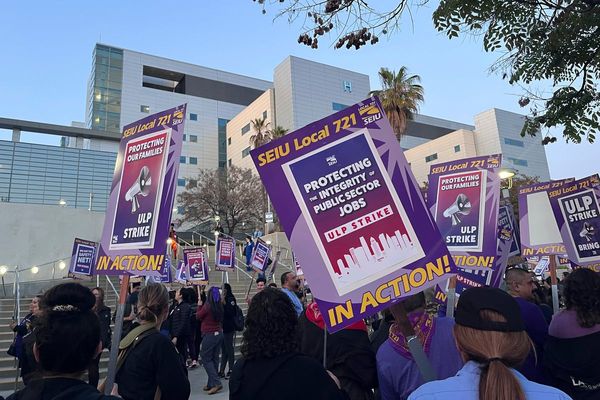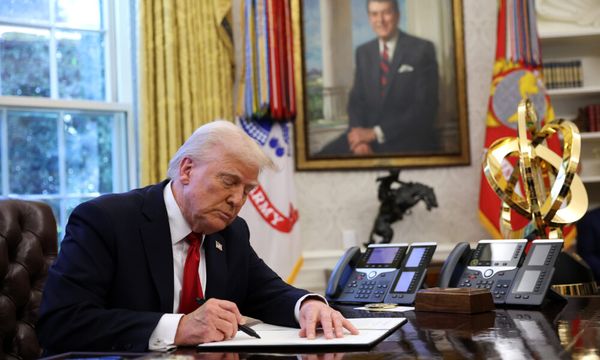
The mid year economic and fiscal outlook (Myefo) released on Wednesday showed a slight increase in the size of budget deficits over the next three years. But no one should get too concerned – it is all just changes in estimates. We need to care more about reality.
As a nation we worry far too much about government budgets. As my boss at the Australia Institute, Richard Denniss, once remarked to me, in the United States the key political speech each year is the State of the Union delivered by the president, whereas here our key address each year is the budget, delivered not by the prime minister, but the treasurer – a person who often is not even the deputy prime minister.
That’s a bit odd.
We even get excited about an update to the budget!
Last year the Myefo numbers were better than had been expected; this year the numbers are worse than expected.
That doesn’t mean Jim Chalmers was a genius last year, or that this year he is a dunce.
The budget frequently gets things wrong and, even when the “error” is one of a smaller deficit (or bigger surplus) than expected, it tells us very little.
In the 2020-21 budget, Josh Frydenberg suggested that the 2020-21 deficit would be 11% of GDP. That number was out by a record 4.6% of GDP and the deficit ended up being just 6.4% of GDP.
If the graph does not display click here
As it is, in May the size of the budget deficit for 2024-25 was predicted to be equal to 1.0% of GDP. In the Myefo it predicts it will be … 1.0% of GDP.
All the changes are for the next three years, and even there they are trivial:
If the graph does not display click here
The Myefo states that the budget will be “returning to balance by 2034–35”. This apparently is news, even though the May budget predicted that by the same year the budget would still be in deficit.
Can we please all get a grip?
Budget estimates change all the time, and rarely end up close to what was initially predicted.
If the graph does not display click here
Worry less about budget predictions. Care more about reality.
Right now, unemployment and underutilisation are low and inflation is around where it should be. That is good, and important.
Worry more about the fact real wages have a long way to go to recover:
If the graph does not display click here
I must admit this is one topic where I was too optimistic.
For a brief moment I thought the idiocy over budget deficits and debt was finished.
I thought, given the Morrison government had to send all their “Back in Black” mugs to the dump, and given they presided over the biggest ever deficit, while the Albanese government delivered two budget surpluses in a row, the LNP and conservative media might have realised it was a dumb fight.
But no.
Instead, we have been greeted this past week with talk of a “record” change in the budget balance.
Please. The only sensible way to look at budget balances is as a percent of GDP, and the drop of the balance is hardly a record on that score:
If the graph does not display click here
But why the big drop?
Well, last year company taxes from mining exports were larger than expected – delivering a bigger than expected surplus. This year the opposite occurred.
This is just luck. Last year the budget (and Chalmers) was lucky, this year it (and he) was not.
It says nothing about our economy, because we need to realise that budget surpluses are almost all about revenue. If the government takes in an amount of revenue that is above the equivalent of 25% of GDP, then a budget surplus is on the cards – if not, then it isn’t:
If the graph does not display click here
That we are not in a surplus despite revenue now above 25% of GDP might have you thinking that government is grossly out of control.
But no. It’s just that the NDIS means we spend a lot more on disability support than in the past when we didn’t actually have an NDIS (weird that).
As the Parliamentary Budget Office analysis after the May budget showed, if you exclude spending on disability, the level of government spending is now historically low:
If the graph does not display click here
But before everyone starts getting all excited about government spending and the need to cut “NDIS waste”, let us remember the importance of revenue and the reality that Australia is a low-taxing nation.
We are low-taxing, not just compared with the Nordic and Scandinavian nations but even with New Zealand and Canada and the UK.
If the graph does not display click here
If we just raised the same amount of revenue as the average of all other rich nations in the OECD, we would raise between $135bn and $140bn a year extra – more than enough to easily cover the NDIS (and a range of many other services).
And it need not be done purely through raising taxes, but through reducing the tax discounts.
On Tuesday the latest “tax expenditure statement” was released showing the amount of taxation foregone due to discounts and exemptions.
The discounts given to superannuation contributions and earnings, the 50% capital gains discount, and also the reduction available due to rental deductions, means that the richest 10% of individuals in Australia benefit from paying about $50bn less tax:
If the graph does not display click here
So, the budget numbers suggest we are set for a deficit for the next decade.
That will get the headline, as will spending on the NDIS. But always remember that budgets and their updates are about choices.
Right now, the government is choosing to deliver $50bn a year to the richest 10% of Australians for no real, discernible public good that benefits the nation. Maybe that deserves a bit more attention than we give predictions of budget estimates which will soon be forgotten and likely be wrong.
• Greg Jericho is a Guardian columnist and chief economist at the Australia Institute and the Centre for Future Work
• This article was amended on 19 December 2024. An earlier version stated that Australia could raise $135m to $140m a year extra, while the correct estimate is $135bn to $140bn.







